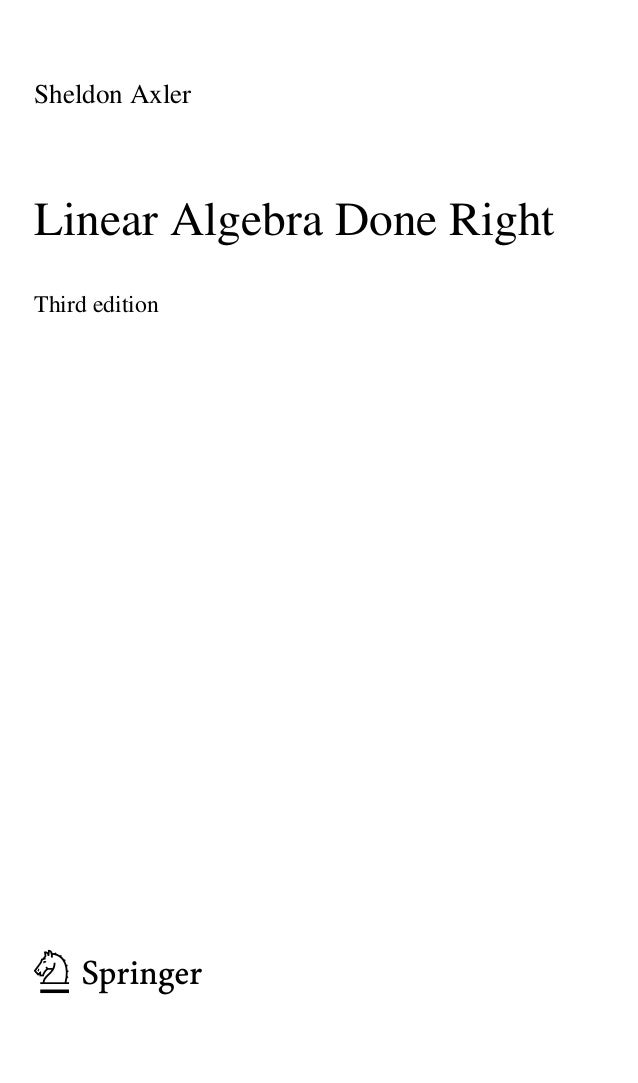
Please only read these solutions after thinking about the problems carefully. Do not just copy these solutions. My favorite Linear Algebra textbooks. by Sheldon Axler. by Kenneth M Hoffman, Ray Kunze Good Linear Algebra textbooks (not complete).,. by David C. Lay, Steven R.
Axler Linear Algebra Done Right Solutions
McDonald. by Steven J. Leon.,. by Sergei TreilLinear Algebra for Machine (Deep) Learning. by Stephen Boyd, Lieven Vandenberghe. by Gilbert StrangTable of content. This Post Has 18 Comments.
Let R be the positive square root of T.Then from the definition of positive operators, R is self-adjoint. Therefore, V can have an orthonormal basis consisting of eigenvectors of R. Let them be e1,., en. Let a1, an be the according eigenvalues.Thus Rei = aiei for all i = 1, nthen RRei = ai^2. ei. Since R is a square root of T.T ei = ai^2. ei.
Which shows that e1, en are also eigenvectors of T.Then T have e1,en as eigenvectors (orthonormal and serve as a basis at the same time), with a1^2, an^2 as eigenvalues.Assume that there exist another positive square root, let’s call it R1. Let v1.,vn be a orthonormal basis consisting of eigenvectors. And b1,bn be the according eigenvalues.

By the same logic b1^n.,bn^2 are eigenvalues of T.Thus the eigenspaces of R and R1 with respect to same eigenvalue is identical. (remember that positive operators have non negative eigenvalues, if b1^2 = a1^2 then we know for sure b1 = a1). And the eigenspace is orthogonal to each other (since they are spanned by distinct orthonormal vectors). Since the direct sum of eigenspace equal V.
We can apply that trick like the “orthogonal projection” to show that Rv = R1v for all v of V.Thus we know that R and R1 are identical, only their presentation in the matrix form may be slightly different.What do you think?.